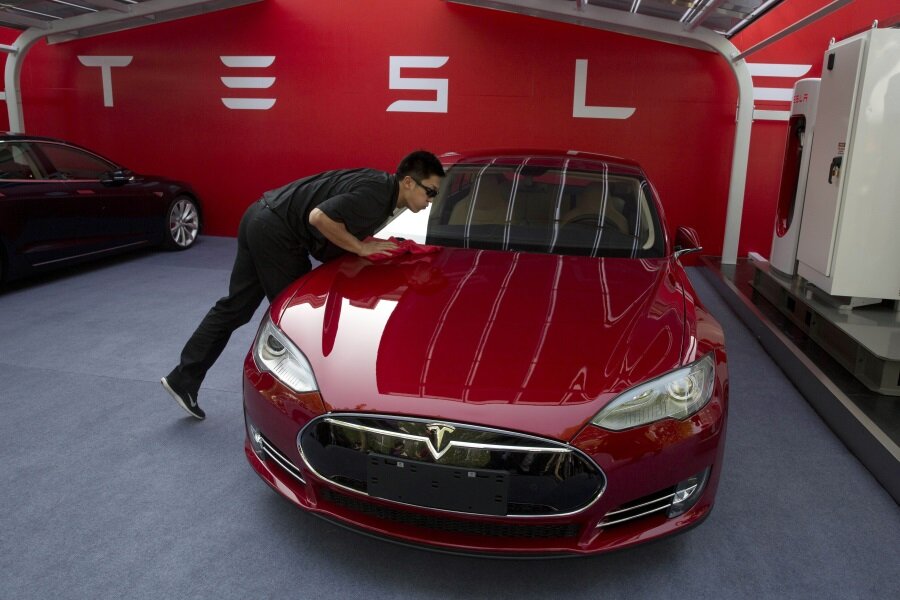Tesla will have self-driving cars on the roads this summer
Loading...
When Tesla chief executive officer Elon Musk tweeted last week that the company had a solution for “range anxiety,” electric-car owners (and prospective electric-car owners) were all ears. Range anxiety is the worry that an electric car will run out of juice before it can reach the next charging station, and for many people, it’s the biggest reason to choose a gasoline-fueled car over an electric one.
The actual solution was a bit of a letdown: At a press conference on Thursday, Tesla announced some updates to its GPS software that would help the Model S electric sedan stay close to Tesla’s network of Supercharger fill-up stations. But at the end of the conference, Mr. Musk casually dropped a bombshell: Tesla will have self-driving cars on the road this summer.
To be clear, this doesn’t mean that the company will be testing self-driving features, or that it will have an in-house fleet of autonomous vehicles logging safety data. Tesla vehicles capable of driving and parking themselves will be for sale to consumers within six months. Equipped versions of the Tesla Model S, and the forthcoming SUV Model X, will be driving themselves on public roads this summer.
The self-driving functionality will be enabled via an over-the-air software update, which will introduce two new behaviors. First, Teslas will be able to drive in “Autopilot” mode on freeways. That means the car will automatically stay in its lane, adjust its speed to the flow of traffic, and react to obstacles that may present themselves. Musk said at the conference that cars in Autopilot will be capable of driving from San Francisco to Seattle without any driver input at all.
The second behavior, called “Summon,” allows a user to hail the car from wherever it’s parked, using his or her smart phone. The car will be able to turn itself on, navigate out of the garage or parking space, and drive itself to the user’s location. The function also works in reverse, allowing the user to send the car back to its parking space remotely. For now, Summon can only be activated on private property, since state laws governing self-driving cars don’t yet allow that sort of behavior on public roads unless a company is testing the car.
Both Autopilot and Summon are similar to functions we’ve seen in self-driving cars from other companies. Some higher-end Mercedes-Benz sedans can automatically steer themselves and regulate their speed on highways (with input from the driver). And self-parking technology is available in some form in vehicles made by Toyota, Lexus, Volvo, Volkswagen, Ford, and others. But Tesla’s cars will bring both features together in an electric vehicle later this year, and it’s not hard to imagine that other automakers will soon follow suit. Self-driving cars, which for years seemed to be always just over the horizon, are finally starting to make their way into everyday life.






